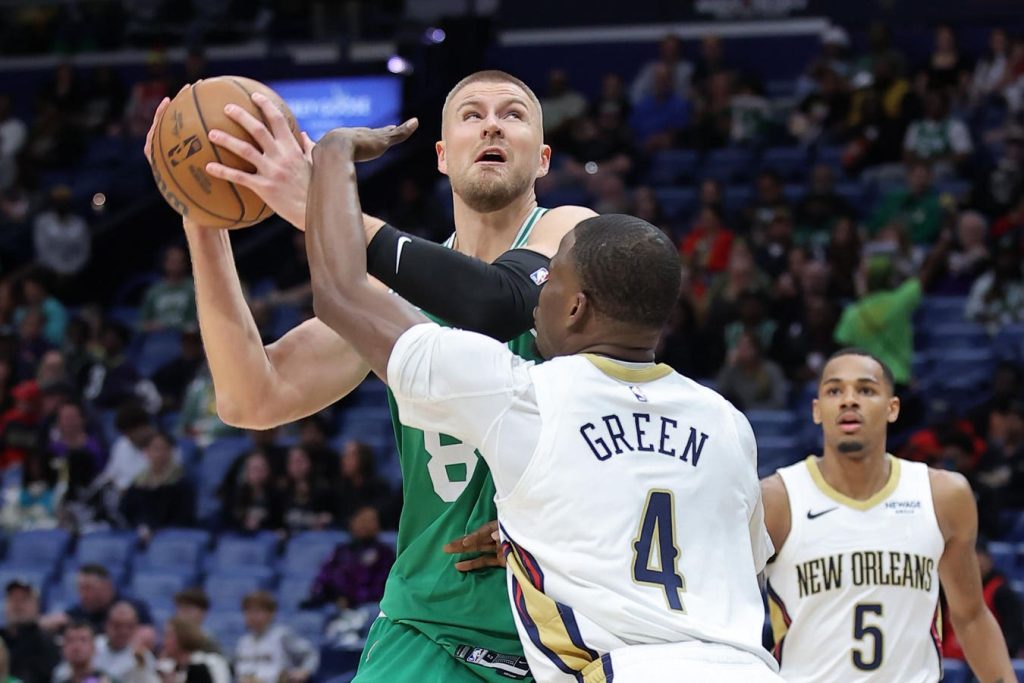Celtics’ January Slump: A Regression to the Mean or Cause for Concern?
The Boston Celtics, reigning Eastern Conference champions, concluded a turbulent January with a narrow victory against the New Orleans Pelicans. While the win brought their record to a respectable 34-15, the hard-fought nature of the game underscored a concerning trend for the Celtics: their struggles to dominate opponents as they did during their remarkable 2022-23 season. The team that once seemed destined for another deep playoff run has shown signs of vulnerability, raising questions about whether their January slump is merely a statistical correction or a symptom of deeper issues.
Just a month prior, the Celtics experienced their first back-to-back losses of the season, a seemingly minor blip at the time. However, January unfolded with a string of disappointing performances. Shocking losses to the Sacramento Kings, Los Angeles Lakers, and Houston Rockets, characterized by blowouts and late-game collapses, painted a picture of a team struggling to maintain consistency. Even their victories, such as a narrow overtime win against the Los Angeles Clippers, lacked the dominant flair that defined their early season success.
A key factor contributing to the Celtics’ struggles lies in their inability to replicate the blowout wins that characterized their previous season. Facing heightened competition and opponents consistently bringing their best game, the Celtics have found themselves entangled in a series of close contests. This shift in game dynamics has resulted in reduced garbage time minutes and increased playing time for starters in high-pressure situations. Consequently, the team appears to be playing tighter, expending more energy, and struggling to maintain their offensive and defensive prowess.
Despite the challenging month, the Celtics still managed a 10-6 record in January, including a demanding West Coast road trip. They remain firmly positioned in second place in the Eastern Conference and boast the third-best overall record in the NBA. However, their 34-15 record is somewhat inflated by their exceptional start to the season. The timing of their struggles, coinciding with Kristaps Porzingis’ return from injury, further complicates the narrative. While his presence should theoretically strengthen the team, the Celtics have struggled offensively and defensively, with opponents frequently achieving career-high performances against them.
While some of the Celtics’ difficulties can be attributed to a natural regression to the mean after an exceptional prior season, there are clear areas for improvement. Returning to their early-season three-point shooting form, improving overall health, and potentially exploring trade options before the February 9th deadline are all avenues worth exploring. The team also has an open roster spot, providing flexibility for potential additions.
Ultimately, the Celtics’ January slump serves as a stark reminder of the challenges of repeating success in the NBA. While their early-season dominance created lofty expectations, the reality of a more competitive landscape has forced them to confront their vulnerabilities. Despite the recent struggles, the Celtics remain a formidable team with championship aspirations. However, their ability to navigate these challenges, make necessary adjustments, and rediscover their dominant form will determine whether they can fulfil their potential and contend for another title. Their January serves as a valuable learning experience, highlighting the need for adaptation and resilience in the grueling pursuit of championship glory. The Celtics are entering a crucial period where their ability to address these challenges and rediscover their winning formula and reclaiming the championship dominance they once demonstrated so effortlessly becomes of paramount importance.
The Celtics’ recent struggles underscore a crucial lesson in the NBA: sustained success requires constant adaptation and evolution. The league is a dynamic environment where opponents constantly adjust their strategies, and complacency can lead to a rapid decline. The Celtics, while possessing immense talent and potential, must embrace this reality and demonstrate their ability to adapt to the evolving challenges. The coming weeks will be a critical test for the team, revealing whether they can recapture their earlier dominance or whether their January slump is a sign of more persistent issues.
While statistical regression is a natural phenomenon in sports, especially after an outstanding season like the Celtics’ 2022-23 campaign, it’s crucial to distinguish between a statistical correction and genuine areas of concern. The Celtics’ inability to consistently close out games, their struggles against seemingly inferior opponents, and their defensive vulnerabilities suggest that their issues extend beyond mere regression. These challenges require a deeper examination of the team’s dynamics, coaching strategies, and player performance.
The return of Kristaps Porzingis, while theoretically a boost to the team’s capabilities, has coincided with the Celtics’ decline. This raises questions about how effectively the team has integrated him into their system and whether his presence has inadvertently disrupted their existing chemistry. It’s also worth considering whether the increased expectations and pressure associated with defending their Eastern Conference title have contributed to the team’s struggles. The mental aspect of the game can be just as crucial as physical abilities, and the Celtics may be grappling with the burden of high expectations.
Looking ahead, the Celtics have several options to address their current predicament. Exploring trade possibilities before the deadline could inject new talent and energy into the roster. Additionally, internal adjustments, such as refining their offensive and defensive schemes, could help them regain their edge. The coaching staff also has a role to play in motivating the players and fostering a sense of urgency and focus. Ultimately, the Celtics’ success will depend on their ability to collectively address these challenges and rediscover the winning formula that propelled them to the top of the Eastern Conference last season. The coming weeks will be crucial in determining the trajectory of their season and whether they can recapture the championship form that once made them a force to be reckoned with.















